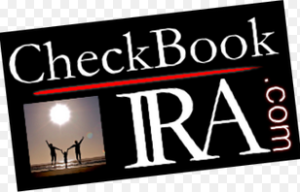 Why use retirement funds for real estate investing?
Why use retirement funds for real estate investing?
The self directed IRA is possibly the absolute best way to buy investment real estate because of its tax advantages and asset protection, with full control by you as the manager or administrator. When you are 59 1/2 years old, distributions can be made without penalty, giving you so many options to invest with full access to funds if you need them for your daily expenses or possible splurges.
Is it legal?
Almost every financial institute has self directed IRAs. In order to invest in real estate with a self directed IRA, many traditional financial institutions do not allow it and might tell you that you can’t.
If they tell you “no”, please know that you can. You just need to find the institutions that will work with you in the proper way to get it done.
Who to use?
In the past, we had a PENSCO account for our self directed IRA, because they allowed real estate investing. PENSCO’s customer service is good – I was assigned an agent who was willing and able to answer my questions. It is one of the bigger companies, similar to Entrust. However, bigger companies charge bigger fees. I usually don’t mind paying fees especially if I am not sure about what I am doing, but this time, I wanted to limit administrative expenses and have a more hands-on approach to actually buying investments that make sense to me. It would mean understanding how to invest the proper and legal way so I could repeat the process by myself. I knew that the first one has the biggest learning hurdle.
Through Jeff Brown of BawldGuy.com, I found John Park of PGI Agency. John knew the ins and outs of investing with IRAs, and his flat, initial, one time fee is reasonable. I figured that the savings I would have NOT using PENSCO or Entrust with their $500 per year fee (charged quarterly) and transaction charges would pay for John’s fee in no time, especially since he gave Uncle and I a discount deal which was very sweet of him.
Currently, we are recommending using Jordan Sheppard of CheckbookIRA.com because of their larger support staff, great blog and expert timely answers to our questions.
Find a good facilitator (i.e. the folks at CheckbookIRA.com). They are worth gold, especially in the beginning when you know the least. The facilitator can be your agent. You do need an agent to file for your LLC(s).
Step 1 – Opening the account with IRA Services Trust
Our facilitator filled out the IRA Services Trust application form found on their website, IRAservices.com. Name on the account is your name, address, social security number, etc. These are individual accounts, so I had one and Uncle had one. IRA Services Trust will be the custodian of the self directed account and will hold the money initially. Uncle and I are the individual owners of the IRA accounts.
The reason we switched to IRA Services Trust from PENSCO is because of their low annual fees – $108 annually, $160 to start, which includes the 1st year’s fees. This was a big difference to Uncle and I because we will have 2 accounts – one for each of us, so instead of $1000 ($500 x 2) per year, every year, we pay $216 ($108 x 2) per year. If you have gazillions in your account, then low fees don’t matter much. However, if you are starting out and only have a few thousand in your account, low fees are important – otherwise your principal balance is eaten away with rather big bites by quarterly, annual, or transactional fees.
Our facilitator, John Park, was designated as a “representative” who is able to talk to them about our account. You will not be giving up control of the account. Rather, a facilitator can hold your hand and set up accounts, entities, etc. on your behalf. A facilitator is optional, but highly recommended. John Park filled out our forms and signed on as our representative.
In order to convert and/or invest in a self-directed IRA, you must hire a custodian (in our case it is IRA Services Trust). By law, an IRS custodian cannot offer investment advice to its clients. The custodian will also be signing your LLC’s operating agreement.
IRA Services Trust acts as our passive custodian – monitoring how much we put in and how much we take out, as well as reporting everything to the IRS at the end of the year for tax purposes.
So step one is to find a facilitator and have them set up the self directed IRA with a custodian, the right way.
Step 2 – Funding the account
PENSCO was gracious as we had them transfer the all of our PENSCO funds outta there into our new IRA Services Trust account. The PENSCO account was then automatically closed (though you should make sure after the dust settles.) We also had a few dollars in a retirement account with Ameritrade that we transferred in after the IRA Services Trust account was opened. Transfer funding forms are located in the “Forms” menu, then “Funding Your Account”, then “Transfer Authorization.” Be sure to read and follow the instructions. A copy of the latest statement and a wet signature is required. These are to be mailed to IRA Services address on the form.
If you are opening an account with “new” money, i.e. making a deposit, fill out the “Deposit Information” form. You will specify the type of IRA as well as the year for which it applies.
*Aunty will write another page about using banks and/or Ameritrade to rollover funds.
Step 3 – Setting up the LLC, by an agent
Our agent facilitator filed for our LLCs with the State of Hawaii (you choose the State in which you will do business). You get to choose a name that you will be happy with. You can check to see if that name is already taken by visiting the Hawaii.gov website, going to “Business Name Search” and entering the name you are considering using.
The business name can be registered online by your agent. The Hawaii fees are $25 + $50 for registering an LLC. After that, the Hawaii licensing renewal is $12.50 per year – which is REALLY low compared to States like California or even Nevada (where rates have increased). These fees can be paid with personal funds, the agent’s funds, or with corporate funds. They can be paid with the IRA funds, but that can be cumbersome trying to get the custodian (IRA Services Trust) to send over a check made out to the State of Hawaii DCCA for $25. Fees are one of the items that can be paid for personally and it makes a lot more sense to do this rather than taking it out of your precious IRA funds.
When registering your business, it will be as a manager managed LLC (you will be the manager and have control). This LLC will be the vehicle in which you will conduct real estate transactions. Your IRA will be “buying” the LLC.
After John successfully applied for our LLC business name and registration and the entity (LLC) was approved, he contacted the IRS for its EIN number (employer’s identification number even if you have no employees). This number becomes the entity’s identification number – the way your Social Security number is your own personal identification number. I like dealing with EINs rather than Social Security numbers because it put me at less risk personally – especially for preventing identity theft. Each LLC will have its own EIN number and Operating Agreement.
Make sure the agent you hire is knowledgeable in setting up checkbook IRAs. They are few and far between so please do not settle for a financial advisor who really does not normally do these.
You can have more than one LLC for your IRA. If so, use an agent to file for the LLC business registration and open separate checking accounts for each LLC.
Step 4 – Opening a business checking account for the LLC
After I received the LLC’s Articles of Organization, proof of registration from the State, and the IRS letter with EIN number, I opened a business checking account with our local bank – Bank of Hawaii with my favorite “nephews” Davin and Israel. You will need to have these documents to show to the bank in order to open your business checking account.
The initial deposit was a check from IRA Services (custodian) from our retirement account. Do NOT fund any part of the account with personal funds. Remember, like a mantra, “Your IRA cannot benefit from you personally, and you cannot benefit from the IRA personally”.
It is VERY important that all deposits, funding and payouts are strictly done with the IRA account monies. Do NOT use personal funds to fund this account – even upon start up. Your banker might tell you different, but insist that the initial deposit to open the account is from your IRA account, not from any other account or cash from your pocket.
To do this, we sent in an IRA Services Trust form, “investment authorization form”. It specified that $x from the IRA account be used to purchase the LLC. A check was then sent to us, made out to the LLC. This is what we took to the bank and used as the opening deposit. All subsequent deposits are done the same way.
The most important mantra you can use is one that the IRS will use: Your IRA cannot benefit from you personally, and you cannot benefit from the IRA personally. If you do not pass this test, you may be subject to fees associated with early withdrawals and disbursements, or worse.
*note – you will have to pay an annual State filing renewal fee, so be careful of which State your entity is filed. as of 2011, Texas is $300 initial year, $150 annual renewal. Nevada is $300 (? not sure) initially, $400 annually. Hawaii is really cheap – $25 + around $50 initially, then $12.50 annually (!) Such a deal, but you do NOT have the anonymity and/or the business friendly courts of Nevada or Texas.
Step 5 – Buying real estate with your LLC (that is owned by your IRA)
Now comes the fun part – go shopping. Look for properties that will cash flow or that you believe will flip profitably. You can go all cash into the deals, and use your new business checking account for all offers, expenses, fees, etc. All income or proceeds from the sale must either get deposited into the LLC business account or directly to IRA Services (our custodian).
Make offers in the name of the LLC, with you as the administrator. The LLC will own the property, 100% and all profits, expenses flow to and from the LLC without personal funds comingling – ever.
If your IRA does not have enough to fully fund the deal and all the expenses, the IRA can be come a part owner in the investment. Income and expenses are split according to the percentage of ownership, and the titling would reflect the custodian account with your name, IRA, and percentage (XYZ Trust Company, custodian FBO Your Name, IRA, 50% undivided interest). Your IRA will not own the property in the entirety and whoever you partner with should think the way you do in order for a mutually beneficial partnership and business venture. Be careful that the other part owner is not you, your close relatives, or any other business entity that you are part of. (remember the mantra…Your IRA cannot benefit from you personally, and you cannot benefit from the IRA personally.)
If your IRA/LLC has limited funds, a non-recourse loan from a non-recourse lender can be the means to acquire cash flow property. The IRA/LLC would be providing a down payment and responsible for all other fees in the transaction, and the balance would be provided by a mortgage lender. The property is owned by and titled to the LLC, of which your IRA is the owner manager, and the note is owned by the bank.
The beauty of these loans is that the loan is strictly based on the property and NOT on your credit worthiness or outstanding loans or your personal debt to income ratios. Hallelujah for that! This is a great strategy for small accounts or people with bad credit history.
North American Savings Bank is the largest lender for this type of loan. NASB will loan different percentages of LTV for single family homes in the depending on where. At the current writing of this article, NASB does not write loans at all for Las Vegas, and 60% LTV loans for Hawaii properties.
However, investing with a loan will make the investment income/sale subject to UBIT – unrelated business income tax. It sounds complicated with many formulas for this and that so we would rather buy the all-in way just to avoid the complications and tax consequences. This does limit how much we can buy, but slow and steady wins the race, in Aunty’s opinion. Please do your own research on UBIT. For now, Aunty is just staying away from that.
Congratulations, now your LLC is the owner of a property!
Step 6 – Hands off except for writing checks
Find a great property manager and rehabber. You cannot manage the property, stay in the property, allow family to stay there, or physically benefit from owning the property in any way. (remember the mantra…) That also means you can’t be the cheap labor and paint, fix up, rehab the property and pay for expenses, or get paid for services. ALL rehab and subsequent expenses must come from the IRA/LLC, period.
It is not worth saving a few bucks to get into the IRS’s cross hairs – so hire professionals and write them the checks for jobs well done from your IRA/LLC checking account.
You will always need a cushion in your IRA/LLC account – especially in the first few months when your cash flow is $zero and your expenses come in. All of these expenses must be paid with your IRA/LLC funds. Sorry to be redundant, but remember the mantra, remember the mantra….. Because it is a checkbook IRA, you cannot just deposit personal funds into the account to cover expenses.
Mixing personal funds and/or time and/or benefits will get you into trouble and your entire investment may be deemed to be a disbursement.
Step 7 – Tadaaaa!!! Reap and sow and watch it grow
At this point you will start to feel on familiar ground if you have cash flow rentals or done flip deals. Income in, expenses out. Buy low, sell higher.
The difference in investing with your IRA properly is that you now have ZERO tax consequences. ZERO!!! Except on the roulette table, zero is now my favorite number!
Tax filing? ZERO! Taxes to pay? ZERO! Flip a property and make a huge profit? ZERO taxes! Getting good net returns from the rental income? ZERO taxes!
So long as you follow the rules and remember the mantra, you now own the golden pot that keeps on giving.
Expenses of real estate owned by the IRA
Be careful and remember the mantra “Your IRA cannot benefit from you personally, and you cannot benefit from the IRA personally”.
Many agents, sales people, financial consultants, bankers, etc. do not understand or know about the importance of this mantra. Once you have established an IRA, all expenses, profits, fees, commisions, payments, must be made to or by the IRA either directly from the custodian or the LLC.
Insurance
Aunty almost got tripped up recently when securing a quote from our AAA homeowners insurance agent. AAA does not write policies for companies, only to individuals (though a company or entity can be named as the additional insured). After conferring with John Park, I needed to find an insurance company that does write homeowner policies for companies. The reason is that if a claim is made and paid out to the owner of the policy (the individual), the IRS can deem that as a benefit to the individual because the check is written to the individual. Even if that individual were to sign the check over to and deposit it into the LLC or IRA account, it might raise a red flag because it isn’t really a contribution to the IRA and to have to explain the situation would be an unneccesary headache that can be avoided by having the check written to the LLC or the IRA custodian FBO “your name”.
If the property is bought with a non recourse loan, the bank will require that it is insured, so please make sure that the property’s policy is written for the LLC, and NOT you personally. Even if you buy a property with 100% cash, the owner of the policy must be the LLC. These are called commercial policies.
Since AAA does not write commercial policies, we are using American Family for the LLC’s policies. Ron Cornell is currently our agent of choice.
Property owner fees
HOA (homeowner association fees), property management, utilities, property taxes, improvement taxes, assessments, etc. must all be paid by the IRA/LLC. We set up auto deductions from the checkbook IRA/LLC to make it easy shmeasy.
Custodial and registration fees
These are the only types of fee that you can pay for personally. If your IRA custodian charges high annual fees, that can take quite a bite from your precious IRA funds every year. Since capitol and income gains are not taxed in a IRA, neither are losses or expenses able to be captured, so we avoid high fees (unless, you have ukubillions in the account and fees are such a small small percentage of your portfolio value.)
A personal check can be written to the custodian to cover those fees, and the custodian will classify that as re-imbursed.
Fees incurred while forming or maintaining your LLC or IRA, such as State fees or renewal costs can be paid for with personal funds without affecting the mantra.
Payments to hire a facilitator are also out of the scope of the mantra and can be paid for with personal funds.
Realtor fees
Hire an agent, even if you are a real estate professional. It might irk you to know that you will not benefit from the 3% as buyer or seller agent of your own property, but take the irk so you avoid the pain of the IRS on your back because you ignored the mantra. This agent should be an arms length away, and not in your payroll or connected to your business in any way.
Be anal
If you are not sure what the IRA/LLC needs to pay and what you personally can pay, check with an expert that specializes in checkbook IRAs. If in doubt, go with what will benefit you the least. Be strict on yourself.
Notes from some experts:
UBIT = Unrelated Business Income Tax = file, pay, and rest easier. In Matt Allen’s book “Leverage your IRA”, the UBIT was discussed. From what I gather, the portion of real estate that is leveraged (borrowed money) is subject to income tax – and the IRA’s LLC must file a tax return if the income is over $1000. However, I am not clear on whether or not Roth IRAs are still liable for taxes for rental income as well as profit from the sale of the properties.
Your tax accountant should know more about this subject. If they don’t find one that does. This is one of the ways that your IRA is taxed, so tread carefully and file correctly.
Paul Haarman Elevation Group webinar:
People feel like their IRA money is in jail because they can’t utilize it.
Put it in a self directed account, i.e. Sterling Trust (Aunty uses IRA Services Trust).
Get into gold and silver – control and possession are the problems in an IRA. Asset Exchange Strategies is a company with A+ rating, 4 published books on self directed structures and investing, survived multiple audits,
Precious metals – Culving – restrictions on quantities. Use approved companies only.
Unlock the funds in your IRA:
Roll over your IRA funds into a custodian account who is accountable for the IRA. A custodian is a non interested 3rd party who facilitates moving the funds and at the end of the year, reports to the IRS the balance of your account. The custodian will ask you total value, which you tell them – basically on good faith.
Create an LLC which is owner managed fully or partially owned by the IRA. Since the self directed IRA owns the LLC, IRA funds can be legally transferred to it in exchange for member units (shares) of the LLC. After this funding, investments can be bought, managed, and sold within the LLC. This gives you checkbook control and you as the LLC manager, are in control of the investments that you want to make on behalf of the IRA. You control everything. You handle all investments without custodian involvement. You get approval for your investments through a requirement-free process.
This is your Owner Managed IRA which allows you to directly invest in gold, silver, real estate.
Income and tax deferral for all growth on investments for regular IRAs. Roth IRAs are not income deductible (after tax dollars) but are tax free on growth AND distributions after age 59 1/2.
If gold or silver does what is anticipated (10x current value), all future earnings and gains are tax free.
Having your LLC gives you anonymity – so don’t put your name in it. This will reduce the litigation threats and provide protection of your investments within the LLC. This is done by isolating the investments within the IRA’s owner managed LLC and separate and away from other holdings you may have.
What if the gov forces you to liquidate? Anything is possible, but having your IRA assets in an LLC which you have control will allow you to take action and make decisions to keep more of what you own.
No need to do a 1031 exchange on sales because it will not be subject to income tax when the properties sell.
[another facilitator – One time set up fee by Asset Exchange Strategies – $2500 – $3000. discount to $1950 for Elevation Group members. 866-472-2454 www.MyRealEstateIRA.com]
Other custodians will charge an annual fee of $500, but they clip you on your portfolio value on top of that, and charge for any and all transactions, i.e. cutting checks,
Take possession of gold and silver – without penalty or early distribution. Other non traditional assets your self directed IRA can invest in are tax liens, trust deeds, private mortgages, managed futures, currency trading, hedge funds, and of course, investment real estate.
You can also invest in a business with 49% or less ownership.
Asset Exchange Strategies does:
File LLC and Federal EIN – in your State or where you will do business
Tax Attorneys draft IRS Compliant Operating Agreement
Set up custodian account
Set up bank account correctly
Will be there for audits
Open account with a custodian that will allow your IRA to own an LLC. (IRA Services) transfer funds Custodian signs LLC’s operating agreement
You cannot form the LLC. Agent does. They can pay the fees to form your LLC. So can you. One of the few times that you can pay for something personally.
Aunty’s Caveats
Remember the mantra, Your IRA cannot benefit from you personally, and you cannot benefit from the IRA personally.
This has saved me a couple of times – especially when dealing with professionals who are not familiar with setting up these types of accounts. Make sure ALL deposits into your checkbook IRA/LLC are written to the LLC and not you personally. This includes your initial opening deposit.
If you are not able to open your checking account without an opening deposit, then wait until you have your check written to your LLC from your custodian first, and then open your LLC account.
Sorry if Aunty sounds like she is beating out the same message, but this was one of the times that Aunty almost made a big booboo and was tempted to just put $50 cash from pocket in to get the checkbook LLC account opened. Good thing I checked with John Park first.
If you make a mistake, there may not be a way to fix it, so do it right the first time, and every time after that.
If you break the rules or benefit from or to your IRA LLC, the whole pile and caboodle can be deemed to be a disbursement. Disbursement, if not intentionally done, can be one of the ugliest 12 letter words you ever encounter. (you counted, just to check, didn’t you?)
Avoid getting disbursement status for your IRA investment(s). Once they are out of the IRA, you lose all those tax deferred advantages of IRAs.
The IRS is sharp, and tenacious. If they don’t catch it this year, they might catch it 5 years from now, and it all becomes retroactively disallowed, taxed, penalized, etc.
Do it right, every time.
Good stuff for a happy ending
IRAs do not have the esteem and emphasis that they deserve. As soon as one starts to earn income, get an IRA and fund it as much as you can. That should be a course on Wealth 101 and taught to every high school student and shouted from the rooftops.
Aunty’s IRA flavor of ultimate choice is the Roth IRA. Believe me, when you are old and ready to retire, you will be glad you opened, funded, and invested well in one. The Roth IRA can be the golden goose that keeps on laying golden eggs.
If you are employed and your company has a retirement plan for you, fine and well, but STILL, open and fund an individual retirement account of your own that you have control over. Sacrifice today in order to truly be able to retire later.
If you are old and grey already, it isn’t too late. Start with $5,000 in a checkbook IRA and invest in cheap stuff like tax liens, tax deeds, or become a hard money lender and earn great interest rates and return.
Because of the non taxed aspect of an IRA, the more money your IRA makes, the more money your IRA gets to keep. $5,000 can easily double in a few years. Add to that each year and get into bigger deals, partnerships, and growth.
Scared because you think that it is risky? Risky to Aunty is having someone else in control in a down market. Risky to Aunty is less than 1% return annually in a bank that makes money on our own money in an economy of inflation and the threat of hyper inflation, recession, or worse. Risky is counting on a company’s retirement for life and/or social security.
If you are scared, then please get educated. Aunty started by going to a Rich Dad seminar and paying way too much for classes that were not very beneficial or realistic. However, that was the pushing point, introducing me to a world of investing and possibilities, so in retrospect, it was a good thing.
Jeff Olson’s caveat and hope is one of the truest and sagest. “The price of neglect is far greater than the price of discipline.” In doing what we need to do to prepare for our retirement and have a great lifestyle, these words are truth to the highest degree.
So Aunty is now disciplined. At age 56, Aunty finally put on the hat of focus, determination, and stopped fooling around in order to be able to fool around when she and Uncle are really old (lol). We began investing and learning, Aunty stopped spending money on doodads, and even started to de-access by selling on ebay, Craigslist, and Amazon. Four short and speedy years later, we are almost ready for retirement and almost really old.
The best and latest strategy is the checkbook IRA
It has been less than a year since we have set up our checkbook IRAs in order to invest in real estate, buying cheap condos in Vegas that cash flow and doing hard money loans paying great interest rates.
It was a bit difficult to start those checkbook IRAs because it was really a big black unknown and uncharted (risky?) territory, but after the first few hurdles of actually finding a facilitator and learning about the process and then understanding what to do, it almost seems like a no-brainer. I only wish we had done it earlier.
However, it is never to late to start
Set your goal of what your ideal life will be, and take the steps to get there. The price of discipline is worth paying if it will get you what you want. The price of neglect is not what anyone would want to pay.
Start today, for a better tomorrow.
 Aunty might be considered weird because I do things differently. I think I was different from birth, much to the chagrin of my poor oriental traditional mother who struggled with the stigma of being a divorcee (at a time when no one was divorced) and worked hard to support her family of 4. She was strong, independent, and strict. I was spoiled, lackadaisical, and lazy.
Aunty might be considered weird because I do things differently. I think I was different from birth, much to the chagrin of my poor oriental traditional mother who struggled with the stigma of being a divorcee (at a time when no one was divorced) and worked hard to support her family of 4. She was strong, independent, and strict. I was spoiled, lackadaisical, and lazy.
 Aunty has been waiting forever to be eligible for Zippy’s Senior Discount Card. Last week, on her 65th birthday, Aunty got her card!!! Woohoo!
Aunty has been waiting forever to be eligible for Zippy’s Senior Discount Card. Last week, on her 65th birthday, Aunty got her card!!! Woohoo!
 We sat at the counter (which got much smaller after the renovation) and Aunty ordered her favorite sushi – hamachi nigiri ($11.55). The very nice waiter said he liked the salmon skin, so Aunty ordered the salmon skin salad ($7.05), which came on a bed of iceberg lettuce. Both were very very good, and perfect for a semi-light dinner, with a little room for dessert. (Jalna, you would LOVE the salmon skin. It reminded me of bacon, yum yum yum.)
We sat at the counter (which got much smaller after the renovation) and Aunty ordered her favorite sushi – hamachi nigiri ($11.55). The very nice waiter said he liked the salmon skin, so Aunty ordered the salmon skin salad ($7.05), which came on a bed of iceberg lettuce. Both were very very good, and perfect for a semi-light dinner, with a little room for dessert. (Jalna, you would LOVE the salmon skin. It reminded me of bacon, yum yum yum.) Daughter on the left got the 2 choice teishoku ($19.50) with sashimi and salmon.
Daughter on the left got the 2 choice teishoku ($19.50) with sashimi and salmon. Rosie’s John picked up the tab, saving money with Aunty’s NEW senior discount card, and Rosie treated Aunty to her favorite dessert – glazed donuts. With Aunty’s discount card, she saved 14¢ per donut – which doesn’t sound like much, but it was still – Wooohooo!
Rosie’s John picked up the tab, saving money with Aunty’s NEW senior discount card, and Rosie treated Aunty to her favorite dessert – glazed donuts. With Aunty’s discount card, she saved 14¢ per donut – which doesn’t sound like much, but it was still – Wooohooo!
